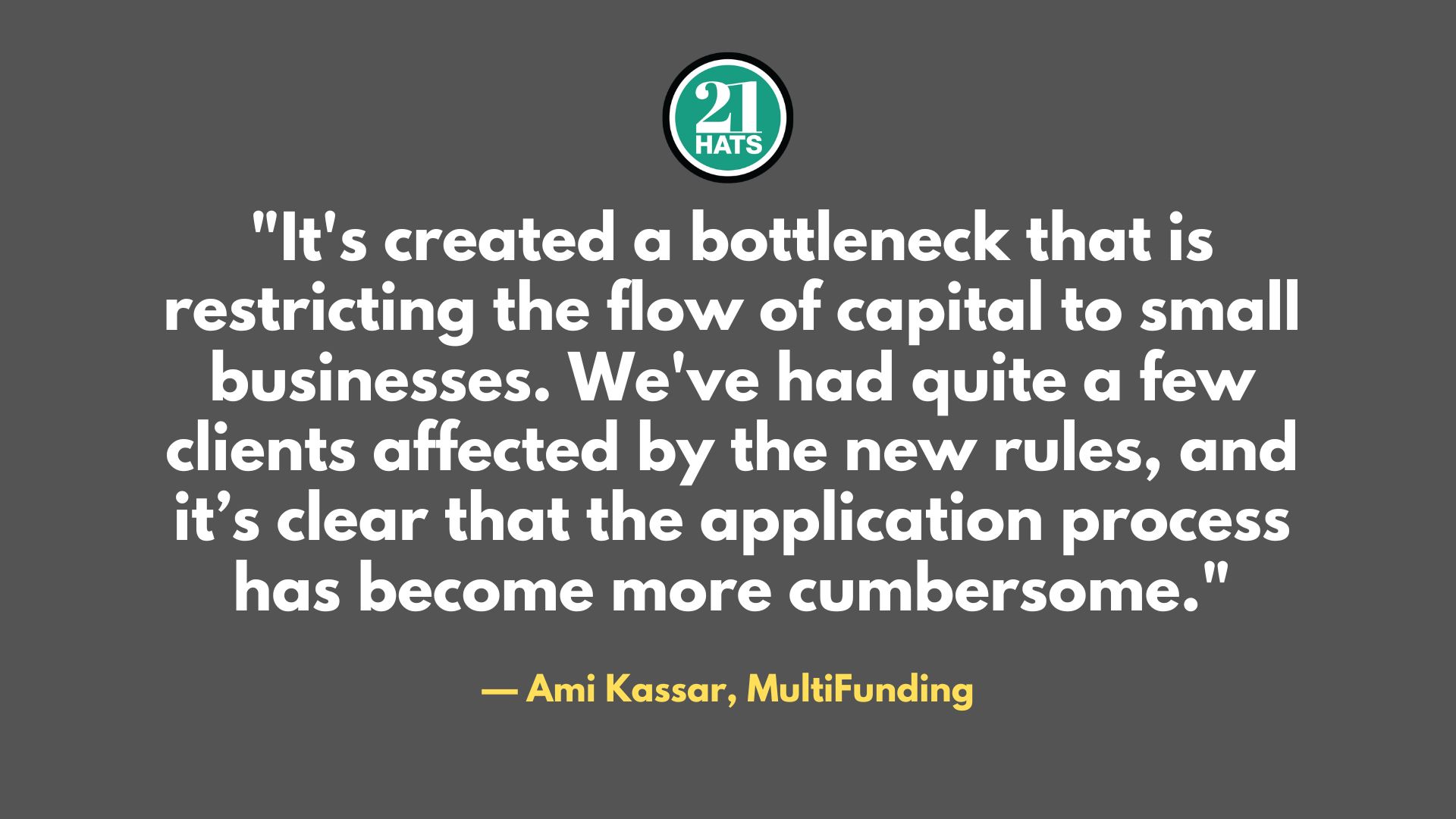Some SBA Loans Are Taking a Lot Longer to Execute

The SBA is going after rampant fraud in the PPP and EIDL programs. There have been some unintended consequences.
By Ami Kassar
Several months ago, I wrote columns about a multitude of simultaneous changes that the SBA was in the process of implementing in order to make it easier for fintech companies to offer SBA loans. I was deeply concerned that, with all the changes coming at once, problems would follow. And, well, here we are.
One of those changes is that the SBA is no longer allowing Preferred SBA Lenders to make loan-eligibility decisions. Instead, they must submit loan applications to a brand new “risk-mitigation platform.” This is odd, given that both the 7(a) and 504 loan programs have experienced negligible amounts of fraudulent activity over the years. But preventing fraud in future SBA loans is really just a guise for the agency’s true motive, which is to target fraud in the Covid-era Paycheck Protection Program and Economic Injury Disaster Loan lending. The SBA claims those programs were rampant with fraud, and it is still looking to identify and prosecute offenders. And that, of course, is a worthy goal.
By taking responsibility for vetting Preferred Lender loans, the SBA is seizing the opportunity to identify people with EIDL and PPP loans and to review whether those loans were granted appropriately. The platform identifies 7(a) and 504 applications with EIN numbers or Social Security numbers that are also in the PPP or EIDL databases. Any applicant or guarantor of a 7(a) or 504 loan that is also associated with an EIDL or PPP loan gets flagged with an error code of 4363. This prompts a request to the borrower to provide relevant financial information, usually tax returns and tax transcripts that show filing status, taxable income, and payment types so that the decision to grant a PPP or EIDL loan can be re-evaluated.
So what does this mean in practice? Unfortunately, it’s created a bottleneck that is restricting the flow of capital to small businesses. We’ve had quite a few clients affected by the new rules, and it’s clear that the application process has become slower and more cumbersome. Typically, the SBA will keep the ticket, created after the error code is generated, open for 7 days, and if the borrower fails to provide documentation by the 8th day, the SBA closes the file. But this timeline is a mismatch for the action required to clear the error in the first place; reaching out to the IRS for transcripts takes about 15 days after connecting, and using snail mail can take months.
Even more frustrating, lenders can be in receipt of all the proper documentation and have confirmation from an SBA agent that the borrower has satisfied the responsibility of proof, but if the error code has yet to be cleared, the lender’s hands are tied. A client of ours, for example, had an outstanding PPP loan, but her lender wrote the loan off and told her to stop making payments. However, the SBA still had the loan on file, and it was flagged as being in poor standing.
When our client decided to call her bank to pay off the loan to clear her record, she found there was no record of the loan for her to pay off. She has since asked the bank’s service department to reinstate the loan so that she can pay it off and be in good standing with the SBA, but in the meantime she’s been cut off from any SBA funds that would otherwise be available. Five months after this issue first arose, she’s still waiting for the paperwork to clear.
It’s tempting to think that there must have been another way to claw back Covid-era fraudulent loans without making the SBA loan-application process even more unpleasant than business owners already considered it.
Ami Kassar is CEO of MultiFunding.